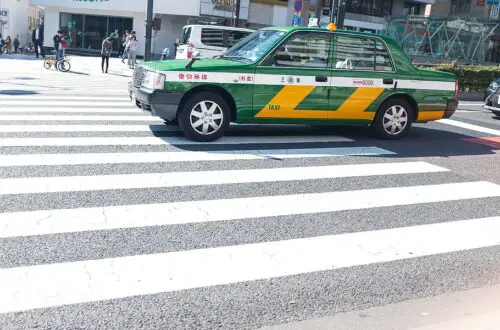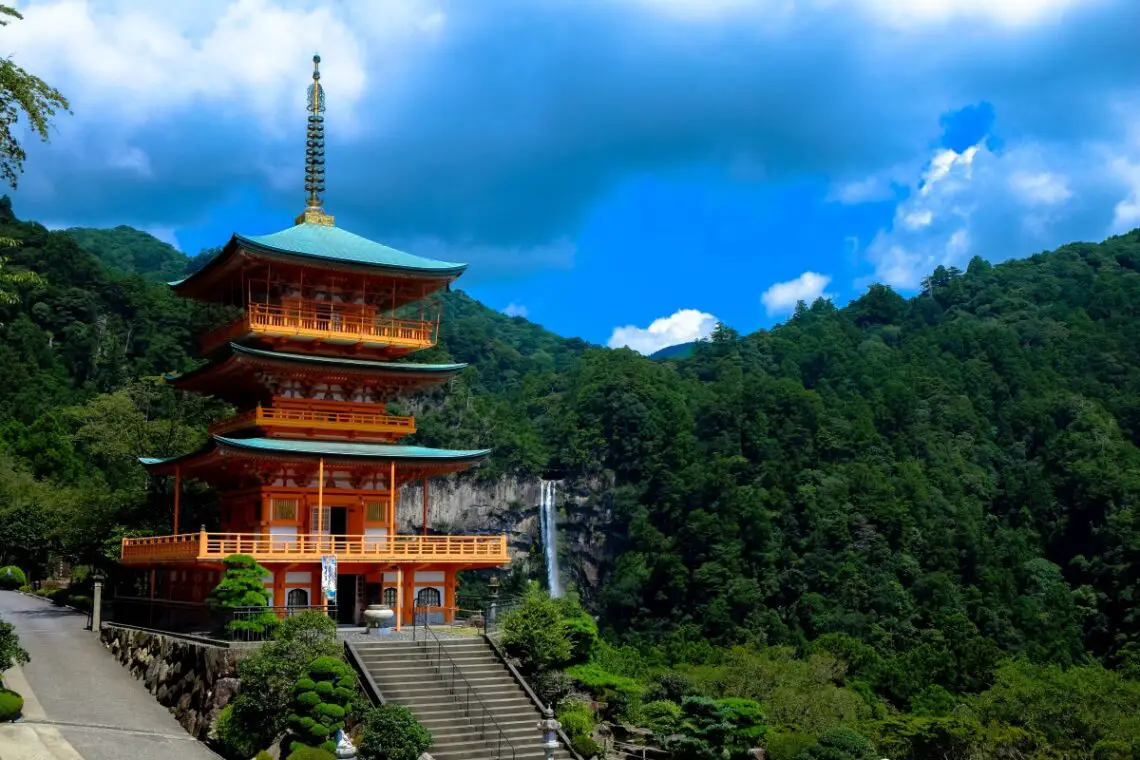
Visiting Japan Is Worth It: We Got the Reasons Why!
Japan is a truly special country that appears to be an offspring of picturesque natural landscapes and dazzling modernity, which nurtures the ancient culture at heart. Do you fancy visiting this country? I’m here to help if you are still pondering over whether or not to make Japan your next holiday destination.
Visiting Japan is absolutely worth it. The food is incredible; the people are ultra polite; and public transport is one of the most efficient systems in the world. What’s not to love? The country is even perfect for solo trotters and first-time travelers. All destinations deem to be tailor-made for a picture-perfect Instagram feed.
If you’re planning a trip to this colorful Asian destination, here’s a roundup of all my must-have experiences in Japan! Sure, not everything is bright and sunny, but there are ways to avoid or overcome unpleasant situations. I’m here to guide you through a combo of some popular experiences and hidden gems.

Ready to explore further? Visit the full Japan Travel Guide for routes, destinations, and essential travel advice.
The Not-So-Good Experiences
Japan is an amazing tourist destination, but like any other country in the world, it is not free of caveats. Remember that you can avoid these minor inconveniences by applying common sense and some tactics.
Crowds
The only way you can avoid the flocks is to leave Tokyo and avoid popular destinations. I know that’s not possible always, so at least avoid city rush hours and don’t visit the tourist spots on public holidays and weekends. Many hotspots such as theme parks, museums, and restaurants remain jampacked on these days.
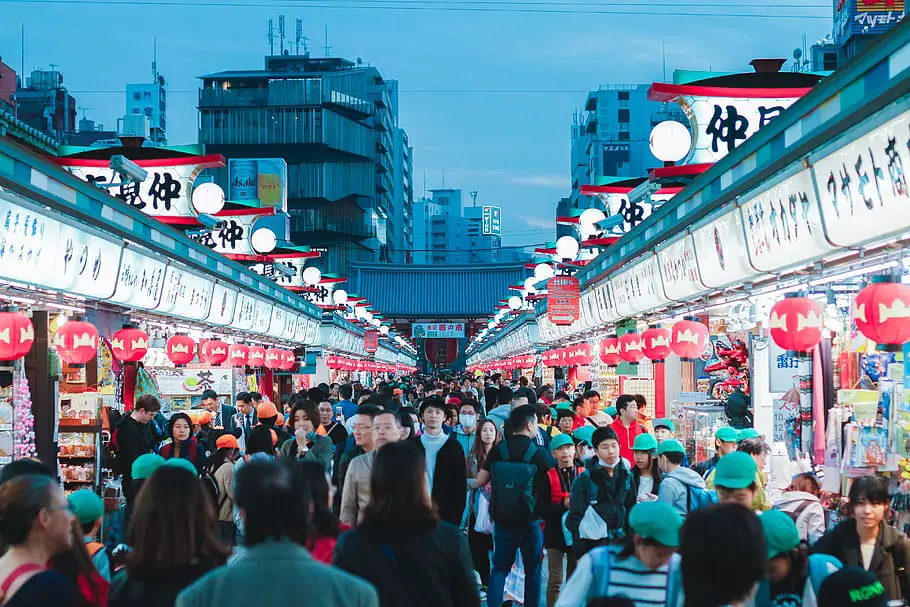
The story repeats for all popular attractions. Long waiting times, navigating amid hordes of people, a rushed experience, and high prices.
Language Barrier
Unlike Singapore or the Philippines, the Japanese don’t use English for their day to day communication. There is some degree of fluency in the city areas but not in the rural parts.
Don’t worry. The country has been becoming more tourist-friendly. Almost all transportation hubs in major cities have English signs.
Overall, Japanese people are also helpful and friendly. If you ask politely, they will try their best to help you find what you are looking for
High Expenses
Japan is expensive, nothing to argue about that. Many Europeans and Americans, especially the backpackers and students, choose less expensive Asian countries like India and the Philippines for this reason.
Everything in Japan, from transport to accommodation and food, is expensive.
Rules
Japanese people are deeply devoted to their culture and tradition. They strictly follow their social norms and conventions. You should learn the basic etiquette of eating and social behavior.

However, don’t stress too much about breaking a few too many rules because they don’t expect a foreigner to understand and follow all these unwritten practices.
Why Is Visiting Japan Absolutely Worth It?
Besides the minor inconveniences, Japan offers tons of reasons that make the country absolutely worth visiting.
Before moving on to the unique attractions and destinations, I must say that Japan is great for solo travelers.
Unlike many other countries, the hotels and restaurants in popular tourist spots actually cater for single guests. It’s amazing because not everyone travels with their partner, family, or friends.
Japan is a Safe Country: Travel and Feel Safe
If you are worried about safety, don’t be. The 2019 Global Peace Index puts Japan in the 9th place among all countries in the world. You can walk on a city road in the middle of the night without getting mugged. Almost every part of the country is safe for tourists.
Pick-pocketing, which is a common phenomenon all across the world, is few and far between even in busy cities such as Tokyo and Kyoto. Violent crimes are almost non-existent. Also, Japanese people are, in general, respectful and polite.
For these reasons, the country is a safe haven for female travelers. You can even find a woman-only floor in some hotels and many female-only capsule hotels. Many trains have women-only carriages too, especially during rush hours.

Even if there could be language barriers, Japanese people will try to help if you seek assistance for anything. Unlike some other countries, taxi drivers don’t scam tourists and random people offering help is not a ploy to rip you off.
Reclaim Spiritual Serenity in Temples and Shintos
Temples are Buddhist worshipping places, but shrines or Shintos are for the worship of a single spirit or deity. Unlike Buddhism, Shintoism has been originated from Japan, offering a deeper insight into the country’s religious traditions.
Thousands of temples and Shintos dot every corner of Japan. As a first-time traveler, you can consider visiting these popular ones:
a. Kyomizu-dera Temple
Being one of the oldest and largest temples in Kyoto, it has become an icon of the city. This UNESCO World Heritage Site is equally popular with the Japanese and tourists.
To avoid crowds, visit during the early morning hours as it opens from 6AM. Dedicated to the goddess of mercy, Kannon, the temple often holds traditional ceremonies and stage productions.

Three fountains are flowing into a pond on the way out of the temple.
The fountains stand for academic success, longevity, and thriving love life.
Drink from any two of them because going for all three is looked down upon.
Before heading to another spot, spend some time exploring the surrounding Ninenzaka district.
There are food stalls and small shops so you can have some snacks and buy souvenirs.
b. Kinkau-ji Temple
This Zen Buddhist temple is a three-storied golden pavilion sitting in the center of a pond, a truly breathtaking sight that appeals to both aesthetic and spiritual senses.
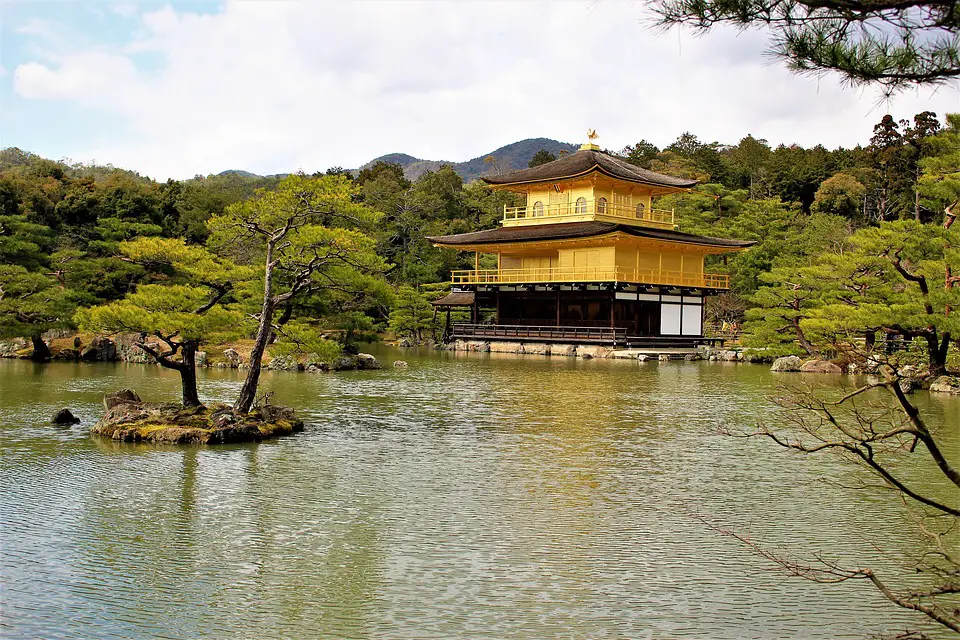
If you look closely, you will discover that the temple’s each floor displays a completely different architectural style. But the most amazing feature is the gold-leaf covered top two floors.
Originally built in 1397, the temple features the extravagant Kitayama culture. The gardens there symbolize paradise on earth.
c. Ise Grand Shrine, Ise
If your itinerary allows visiting just one shrine, it should be the Ise Jingu or Ise Grand Shrine, the most sacred Shinto shrine in the country.
Located in Ise, which itself is a significant historical and spiritual destination, Ise Jingu is actually a complex, accommodating more than a hundred shrines. The holiest of them is Naiku or Inner Shrine, dedicated to the sun goddess Amaterasu Omikami.
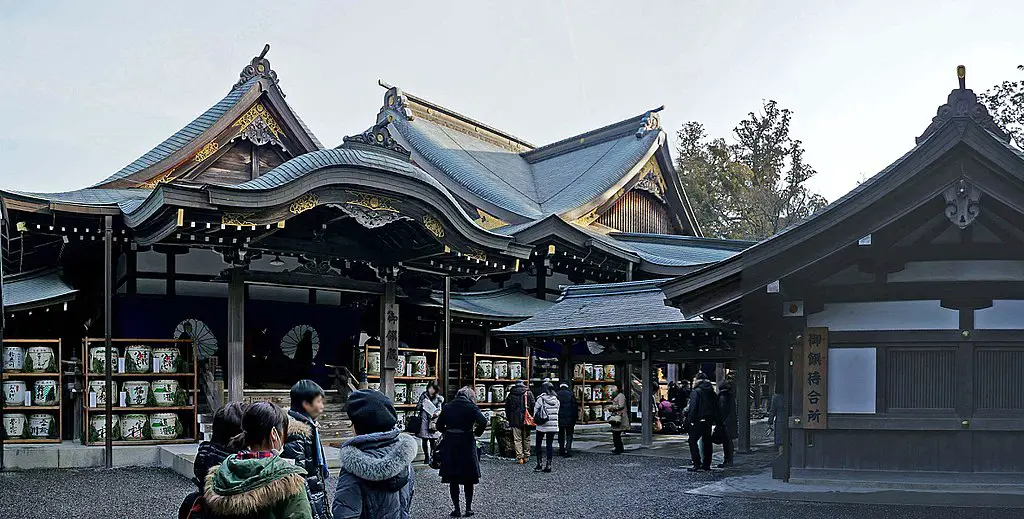
A 15-minute bus ride will take you from the Outer Shrine (Geku) to the Inner Shrine. The road leading to the shrine is lined with charming, old shops and restaurants.
When to visit: The shrine is open year-round, but becomes jampacked in New Year. Japanese people consider it auspicious to visit it during this time. If you happen to visit in April or September, don’t miss the famous Kagura Festival held in the main shrine of the Shintos across the country.
Revel in Adventurous Activities and Sports
Japan is not all about spirituality and meditation. There are plenty of hiking trails and winter sports for adrenaline junkies to cheer about.
Mount Fuji Hike
The mountain is an iconic Japanese landmark and arguably the most famous symbol of Japan to the outside world. It’s the most significant and highest mountain (3776 meters) in Japan.
Watching Mount Fuji from a distance is quite appealing, but climbing the mountain is a once-in-a-lifetime experience. The safest period for climbing is from early July to mid-September—the official climbing season.
Flocks of people gather there during the school vacations from the end of July to the end of August. But the busiest time is the Obon Week in mid-August, when crossing some passages requires waiting in lines.
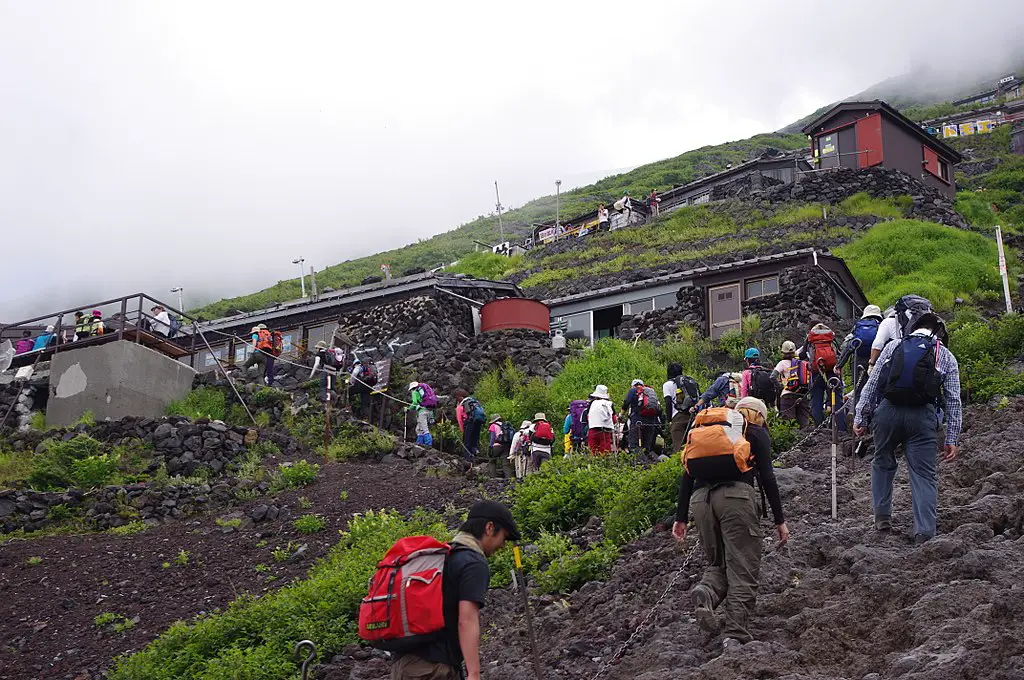
Don’t try to hike any time between October and mid-June because the extreme weather creates the risk of an avalanche.
The mountain huts that offer accommodation and sell food and other necessary stuff shut their operation in the off-season. Public transport to and from the mountain is less-frequent or non-existent during this period.
There are four hiking trails:
Yoshida Trail: Remains open from July 1 to September 10.
Gotemba, Fujinomiya, and Subashiri Trails: Remain open from July 10 to September 10.
The entire hike has 10 stations, with the first is the mountain foot and the last being the summit. There is no need to hire a guide since the trail is not difficult. The only obstacles you will face are the scorching sun and altitude sickness.
You should be equipped with proper equipment and outfit because the temperature can be quite low at the summit.
Japan’s Powder Snow
Japan’s ski tracks deliver a different feel than skiing in the Alps and Rockies. They are the best for reveling in the thrill of deep-powder gliding.
The two major skiing areas are:
- Hokkaido
- Japanese Alps
The Northern Island of Hokkaido
Niseko, a town located in Hokkaido’s Shiribeshi Subprefecture, arguably has the highest-quality powder. It experiences a high amount of snow, about 20 meters per year.
This small town has both groomed and off-piste tracks for all levels of skiers. Foreigners will basically love this place because businesses here have English-speaking staff.
Some smaller ski resorts around Sapporo and the Sahoro Ski Resort route that descends from Mount Sahoro can provide equally thrilling experiences.
The slopes and lifts here give the feel of a private resort because they are never crowded.
Japanese Alps
A series of mountain ranges that split the island of Honshu in two. These ski areas are perfect for those who miss the Alps.
Unlike the somewhat flat tracks in Hokkaido, these Honshu tracks create a more alpine-like feel with steeper mountainous routes and drops.
Just like Niseko being the star of Hokkaido, Hakuba is the most famous site in this area. It was the site of the 1998 Nagano Olympics and the 2018 Freeride World Tour. Abundant snowfall makes sure that the region experiences a prolonged ski season.
Almost all resorts in Japanese ski regions have their private onsen. What can be a better way to regenerate your body after a long day out in the cold?
Experience a New Pop Culture: The Otaku Culture
Fan of manga and anime? Then, you must love to be in the center of Japan’s booming Otaku culture. This widespread pop culture has fans all across the world. If you are an Otaku, why not visit the country where it has started?
Here are some of the best districts for Otaku shopping around the country:
a. Akihabara, Tokyo
If you have time for visiting just one place for your Otaku fix, go to Akihabara.
The buzzing shopping hub has become the center of the country’s Otaku culture in recent years. Many stalls and establishments, from small to big, sell items related to manga, anime, figurines, and video games.
When you are done shopping, stop for a meal or drink in a maid cafe where waitresses dress and carry themselves like anime characters or maids.
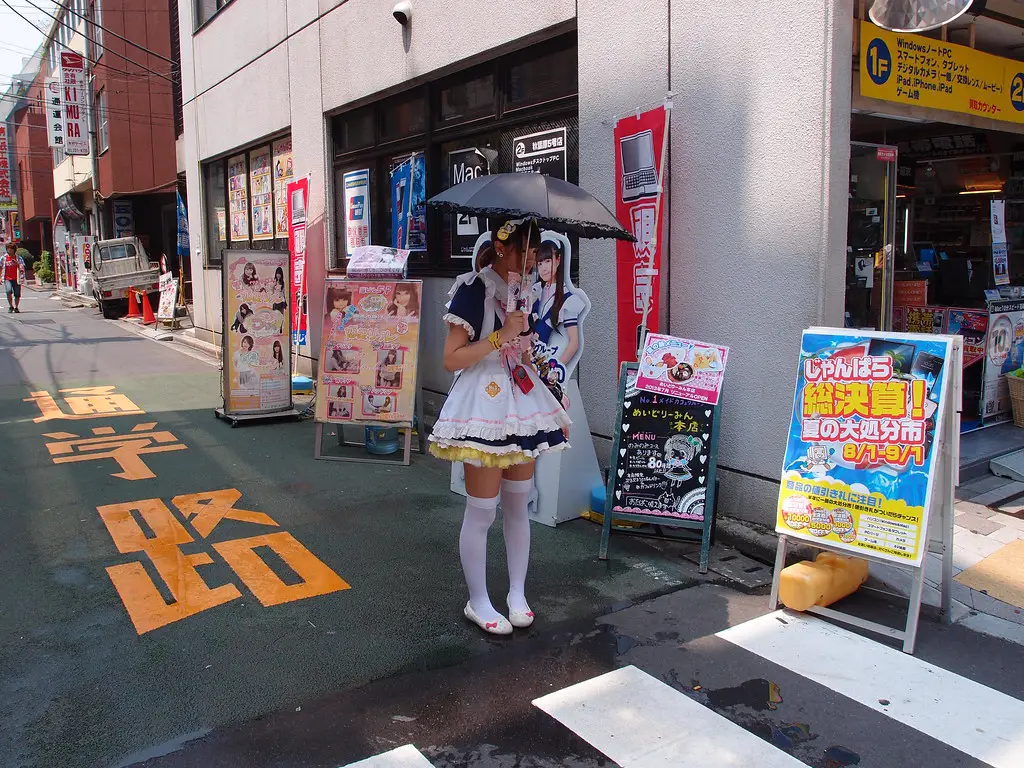
To access an extensive manga library, including comics and DVDs, go to a manga cafe or manga kissa. They offer low-budget accommodation too, with a few of them providing women-only sections.
b. Nipponbashi Otaku Road, Osaka
This shopping district has earned the status of ‘West Japan’s Akihabara’.
It has plenty of shops selling anime, cosplay, and collectibles. There are also cosplay and maid cafes for visitors to eat and drink.
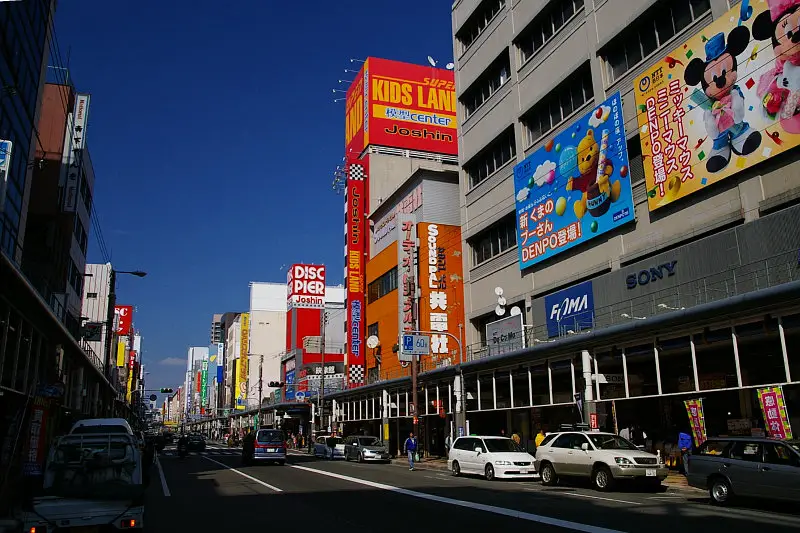
The area has a mascot called Neon. Manga series Haruhi Suzumiya‘s illustrator Noizi Ito created it in 2009.
c. Ikebukuro, Tokyo
The main attraction of this district is the 8-storey flagship store of Animate.
Aspiring manga artists should visit this establishment for buying specialized pens and paper for drawing their own manga.
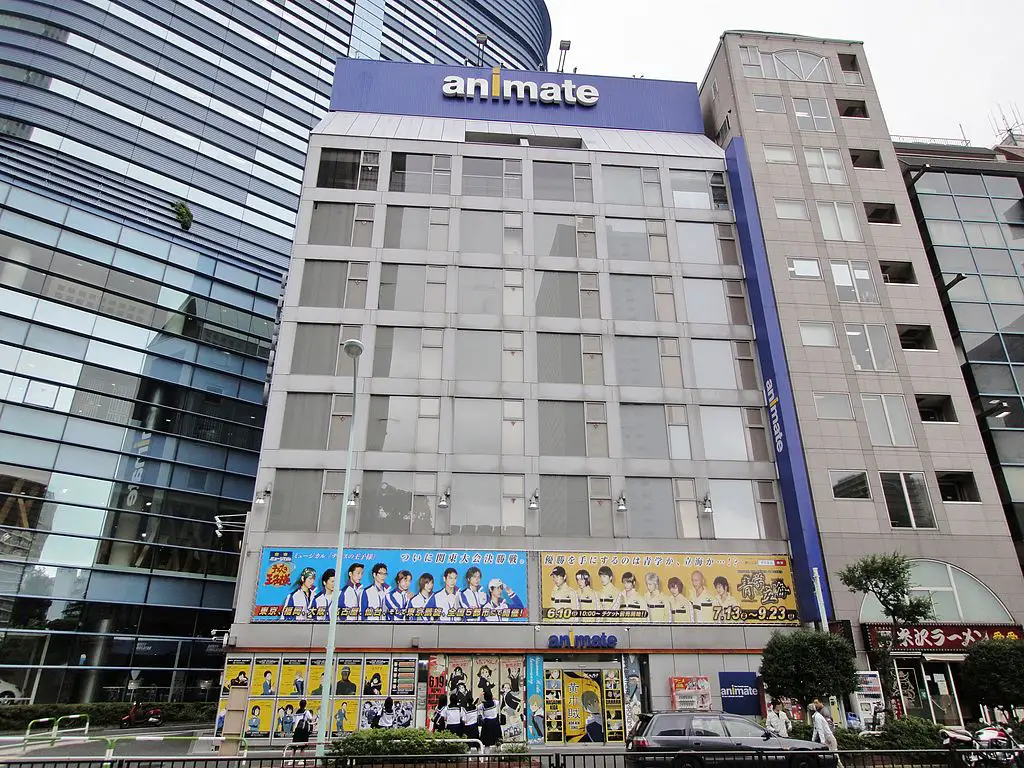
Apart from merchandise stores, you will find cosplay shops too. Contrasting to Akihabara’s male-focused Otaku scene, Ikebukuro costume stores are geared towards women and gay men.
d. Nakano Broadway, Tokyo
Tokyo has such a booming Otaku culture that it deserves multiple spots on this list. Nakano Broadway stands out from other districts because of its vast collection of antique anime cels, memorabilia, and other stuff related to manga and anime. It’s the favorite hanging spot of gamers and geek alike.

Another reason for its popularity is the availability of secondhand Otaku goods. Mandarake, a manga shop that sells used items, has 26 outlets in this area. Each of these shops is based on a different theme.
Explore the Fascinating History: Samurai and Ninja
Just like Otaku, two other things that have become a part of pop culture are samurai and ninja.
There are stores around the country that sell samurai and ninja goods. If you are interested in some cool stuff and feed to your obsession for samurai swords and ninja costume, visit these places:
a. Ninja Museum of Igaryu, Iga
Want to experience the secret life of a ninja? This museum in Iga city is the place you should visit.
Inside the museum is a real ninja house relocated from another place. The interior is decorated with devices and items that real ninjas used to utilize for defense purposes. A Kuno-ichi or female ninja demonstrates various tricks for the visitors.

There is a Ninja Experience Hall where you can see a digital video display of ninja infiltration into a protected building. This hall also shows more than 400 ninja weapons and tools. Visitors are allowed to use a few of them.
If you are curious about the techniques of real ninjas using their weapons and tools, go to the Ninja Experience Ground. Some skilled masters display the right ways to use several armors and devices. For a fee, they will teach you how to throw a Shuriken, a kind of a metal star with sharp edges.
b. Samurai Museum, Kabukicho
This is an excellent place to learn the history of samurai warriors.
The interior mimics the design of an orthodox Japanese house. It displays a huge collection of armors and helmets used by that medieval military nobility. Visitors can dress up like a samurai warrior with armors of their choice.
The on-site souvenir shop sells various samurai goods, Sengoku warrior figurines, and a few other items. The shop provides the facility of sending the purchased items to your preferred address in another country.
c. Last Samurai, Osaka
This establishment welcomes everyone and gives you the chance to be a real samurai. A sensei teaches the art of Japanese swordsmanship and how to practice Zen meditation. What’s better is you get to slash down a makiwara post using a real katana while wearing traditional iaigi outfit.
The experience is fun and educational at the same time. They will give you a short video of your katana-wielding—something to cherish for life.
Festivals: Be a Part of Fun, Laughter, and Japanese Tradition
Japan arranges plenty of festivals and events all year round. No matter which time of the year you visit, there will always be an event going on somewhere in Japan. Some of the major festivals are:
Gion Matsuri
When: July 1st to July 31, 2020
Where: Kyoto
A highly popular festival that gets international recognition and wide social media coverage. Going on for the entire month of July, the event is an important part of the Kyoto culture.

Try to attend between 17th to 24th July when the Yoi-yama events and the main float processions take place. To double the fun, join these events by wearing a traditional yukata.
Aomori Nebuta Matsuri
When: August 2 to 7
Where: Aomori
Arguably, the most colorful summer festival in Japan. Held across the towns in Aomori Prefecture, the highlight is daily parades displaying enormous lantern floats. It may take for the local teams to design and construct the beautiful floats made of colorful washi paper, cotton, bamboo, and wireframe.
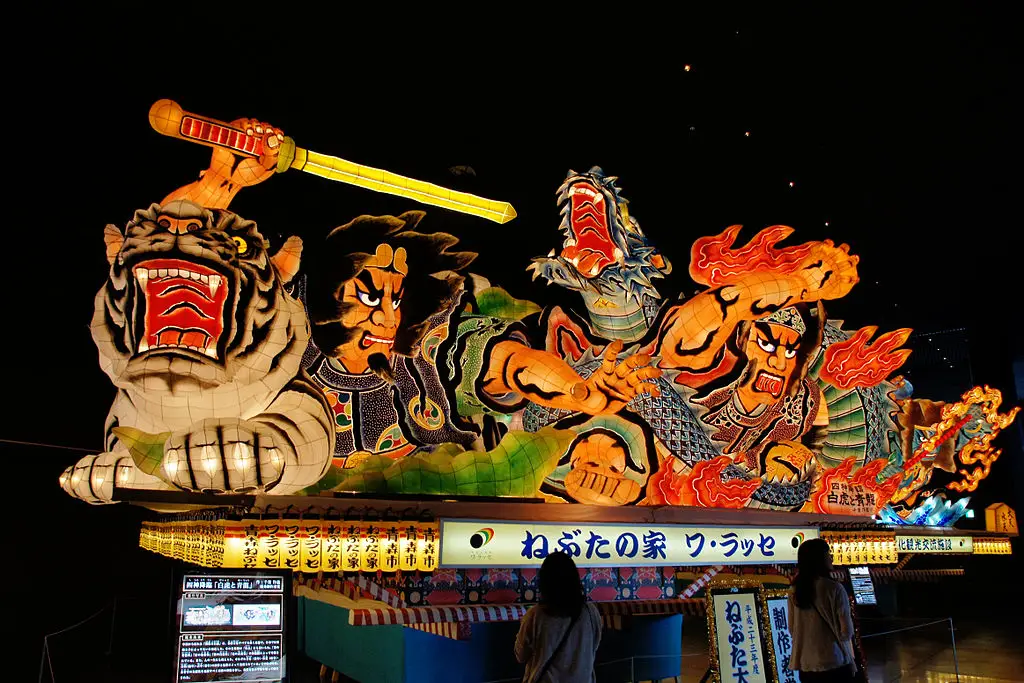
Representing Japanese gods and mythical figures, the floats are carried through the city center. Musicians and dancers join these parades to make them more festive.
Tourists can watch parades and listen to live music. They can even join the dancing if dressed up with the traditional haneto dancing costume.
Awa Odori
When: August 12th to 15th
Where: Tokushima City
Love dancing? Be a part of the largest dance festival in Japan. Awa Odori draws more than 1.3 million tourists every year.
During the festival, you will see adults and children alike are performing ‘Fool’s Dance’ dancing on the city streets. Just wear a cotton kimono and join them outside the stage area designated for professional dancers!
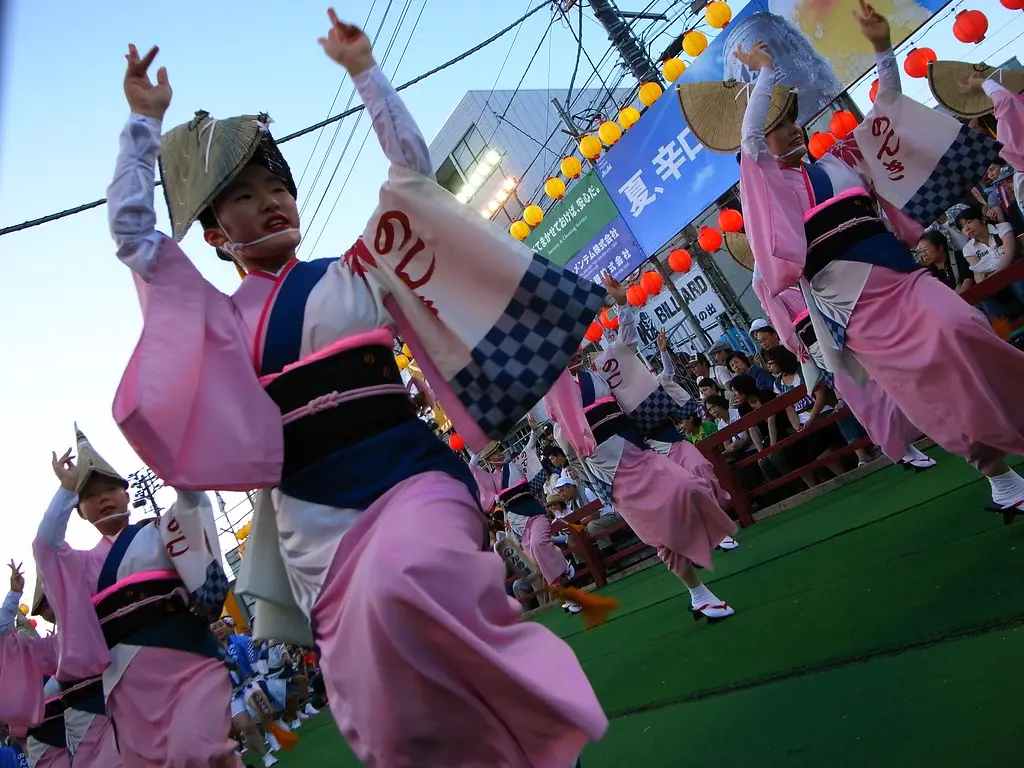
There are daytime events but the main attraction is the performance of ‘ren’ dance groups, taking place between 6PM and 10:30PM.
Sapporo Autumn Festival
When: September 9 to October 1st
Where: Odori Park
October is rainy and cold starts to set in around this time. But the Autumn Festival still gives you something to cheer on. To celebrate the harvest season, this event displays the best food samples from across the Hokkaido region.

The event takes place across several blocks in Odori Park. Each block has its own unique food theme. For example, block 5 might be dedicated to the variations of ramen noodles while block 10 is for a huge meat selection.
Try Exotic Food Items: Delectable Japanese Cuisine
You should really taste Japanese food when in Japan. In fact, it will still be absolutely worth it if you make it a food-only tour. Enjoying the local delicacies will soon make you obsessed with Japanese food.

Along with plenty of meat delicacies, including the world-famous and highly-expensive Kobe beef, Japan also boasts of flavorsome and tasty vegetarian dishes. Here are some of the must-try items when you are in Japan:
Noodle Dishes
Japanese people love to eat noodles, so you will find several variations of them, including ramen, udon, and soba, in their cuisine.
Ramen
The Japanese people have adapted this Chinese-origin dish to their local palate. The soup stock ingredients are the main points of differences between Japanese ramen and its Chinese ancestor. The stock in Japanese ramen is very flavorful as it contains at least five to forty ingredients.

Udon
Delicious and inexpensive—that’s how you can describe udon, a chewy wheat flour noodle. Exploring the regional varieties of this highly-customizable dish can be a delightful experience for a foodie traveler.
The most popular varieties are naniwa udon from Akita, Nagoya’s kishimen udon, and Kagawa’s sanuki udon.
Soba
The Japanese have been eating this buckwheat flour noodle for centuries. The thin, long noodles are served with a hot broth and dipping sauce. The dish is appetizing and healthy, and you can eat it in any weather.
Sushi and Sashimi
Undoubtedly, these two dishes are the most famous among people from other countries. Both dishes have numerous variations and you can find them in sushi, Izakaya, and seafood restaurants.
Sushi is made with fresh raw fish on top of a bite-size vinegared rice ball. Maki, nigiri, uramaki, and temaki are some of the variety of sushi dishes. The restaurants strictly maintain their quality so there is no doubt about the freshness of the fish.
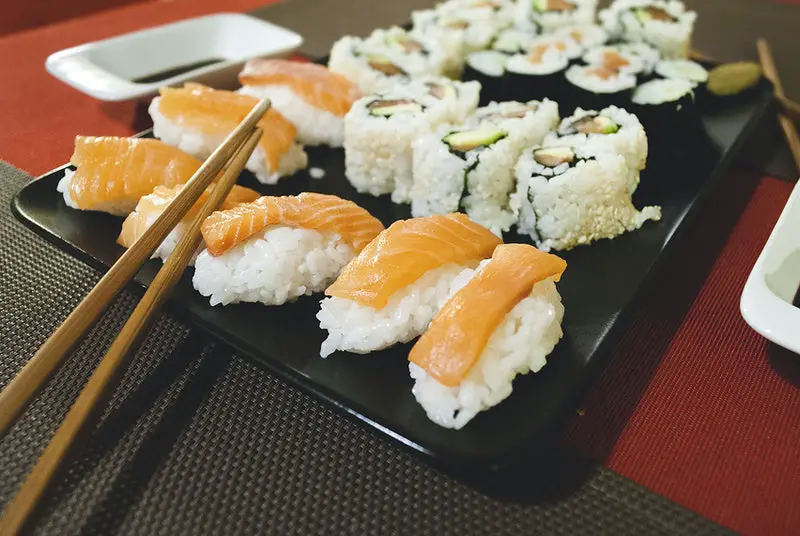
Sashimi refers to thin raw food sliced into a bite-size and served with soy sauce dipping and wasabi. Unlike sushi, the dish does not have rice and is not limited to only fish. There could be beef, chicken, and horse meat sashimi too.
Miso Soup
This soup is a part of the Japanese traditional meal. The ingredients may vary depending on the season bu the stock is always made of fish or kelp. Other common ingredients are clams, pork, tofu, and onions.
Matcha and Mochi
Two other things that the Japanese are obsessed with are matcha green tea and mochi.
There is a great variety of matcha-flavored food items. With everything from matcha-flavored ice cream to cakes, lattes, and even soups, it’s actually hard to find a food item that does not have a matcha version.

Equally popular is mochi, a kind of rice cake, which is mainly used for preparing a wide variety of desserts.
Kaiseki Ryori
Another thing you must eat is Kaiseki ryori, a refined Japanese haute cuisine. With an origin traced back to the imperial court, this multi-course cuisine is an artful approach to food and a tribute to local and seasonal ingredients.

With no specific preparation rules, a master chef can exercise his creative freedom to prepare kaiseki ryori. The prepared meal is supposed to have a perfect balance of texture, taste, and artistic presentation.
To Go or Not to Go…
I hope this guide has convinced all those indecisive souls who were mulling over the idea of visiting Japan. Of course, the country has scads of common tourist attractions similar to other countries. But, I’ve kept the experiences on this guide mixed, including both popular and lesser-known, to point out that the country has something for everyone.



